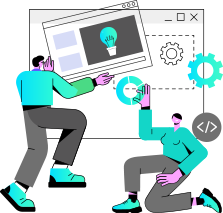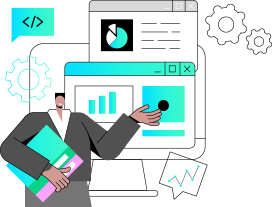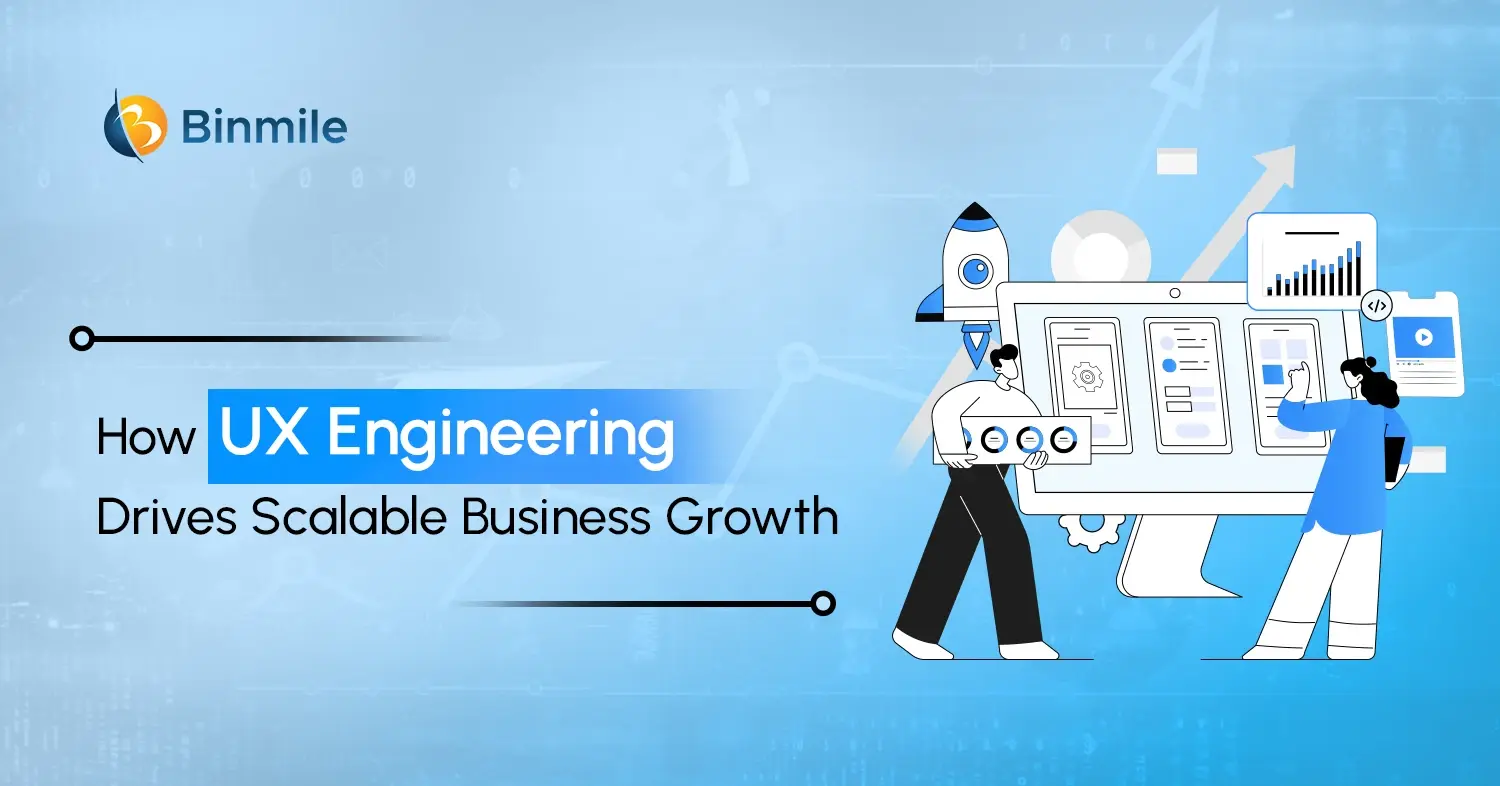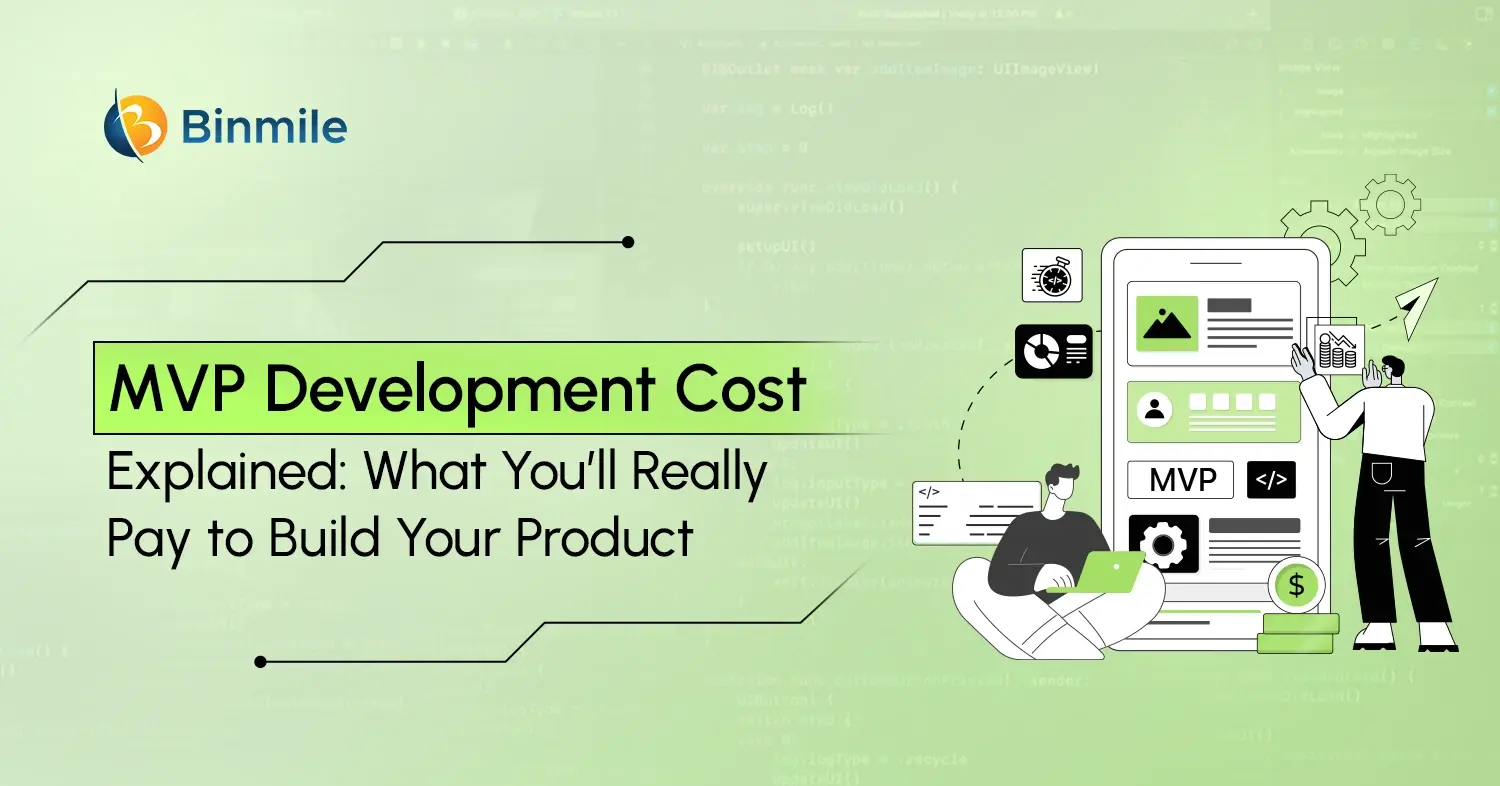Every business, be it a start-up, a small business, or an established one that aspires to launch a product successfully, must have come across the term “Product Development”. In definition, what is product development? It’s a straight answer. It’s all about delivering a new usable application for the market or improving the existing applications to increase sales or enhance the user experience. However, its journey rarely resembles a straight line. It is completed in many stages and steps. Whether you are creating a product to start a business, penetrate a new target market, or expand to new regions, you need to create a product development strategy. Why? It helps businesses allocate their budget and resources efficiently.
While product development seems to be a stepping stone towards entering new markets and exploring new opportunities, at the same time, it fills entrepreneurs’ heads with many questions. From how to build a product effectively, and its different stages, to how to find the right product development services company partner and whatnot! So, if you’re also wondering about the nitty-gritty of product development, then this blog is for you. In this blog, we’re exploring which questions to ask when developing a new product. Moreover, some common product development questions and their answers that help businesses make an informed decision.
Product Development Strategy: Answers to Your Most Pressing Questions
Before we start answering the most frequently asked questions on product development strategy, we’d like to remind you that while every product story is different. There are a few best practices founders or entrepreneurs take on the road to starting a business and shipping a finished product. So, let’s review them; later, you can pick the question you want to know about.

Q 1. What is Product Development?
It’s the process by which a new good, service, or idea is brought into the market or the process by which an existing good, service, or idea is modified and enhanced for sale in the market. It’s a complex process of activities that includes market research, ideation, and the creation of new solutions, among other steps. It’s a collaborative effort that typically involves individuals with expertise in different departments such as marketing, design, engineering, and production.
Q 2. How Does a Product Development Strategy Drive Success?
A product development strategy is a plan that outlines how a company will create, improve, or launch products to meet market demands, achieve business goals, and enhance competitiveness. It involves defining the target audience, identifying product features, determining the development process, and establishing timelines and resource allocation. The strategy also includes market research, risk assessment, and methods for gathering customer feedback, ensuring that the final product aligns with consumer needs and company objectives.
Q 3. What’s the Difference Between Product Development and Product Management?
While product management and product development sound like similar concepts, they’re fundamentally different. Product management is responsible for the overall product strategy, defining user needs, and setting goals for the product design. It’s primarily led by product managers who set the vision for their company’s offerings, ensuring that every product delivered meets the needs and wants of the customer. On the other hand, product development focuses on solution delivery, which implies prototyping, designing, and testing a product. Product development teams can consist of software developers, designers, engineers, quality assurance testers—anything it takes to bring the ideal product to life.
Q4. What Are the 7 Key Stages of the Product Development Lifecycle?

It’s essential to understand different stages of product development, as they help you get clarity on which stage you are in the creative process. Later on, your team can tick off each step efficiently while ensuring there’s no confusion about what to do next. The 7 stages of product development typically include:
- Idea Generation: brainstorming and gathering new product ideas from various sources.
- Idea Screening: evaluating ideas to filter out those that are not feasible or aligned with business goals.
- Concept Development: creating detailed product concepts, including features and target market.
- Market Research: Conduct research to understand customer needs, market trends, and competition.
- Prototyping: developing a prototype or minimum viable product (MVP) to visualize and test the concept.
- Testing and Validation: gathering user feedback and making necessary adjustments to the product.
- Commercialization: launching the product into the market and implementing marketing strategies.
Q 5. How to Select the Right Development Methodology for Your Product?
To manage a product development project efficiently, the SDLC team must adopt a software development methodology that will work best for the project at hand. Even though all methodologies have different strengths and weaknesses and exist for different reasons, we recommend you consider certain factors before choosing one for your project, such as size, project deliverability, and team. Some of the most used methodologies are Agile, Waterfall, Scrum, and Kanban.
Q 6. What Are the 4 Types of Product Development?
When we discuss product development, we’re not just talking about developing new products. At times, businesses also implement changes to existing ones. So, the focus is on a product’s entire journey, from the initial idea to its market release and later, irrespective of whether it’s being built from scratch or enhancing an existing product. Thus, the 4 major types of product development are:
- New-to-the-company product: It’s a good or a service that is new to the company but has been sold by a competitor in the past.
- Improvement in an existing product: It’s an enhancement of a product already on the market.
- Extension to an existing product line: It’s a new product developed as a variation of an already existing product.
- New-to-the-market product: It’s a good or a service that has not been available to consumers or manufacturers in the past.
Q 7. How Is AI Transforming Product Development?

A lot of organizations are leveraging artificial intelligence to enhance ideation and creativity, gain market and customer insights, and add user-friendly features to their products, especially generative AI. Its capability to quickly analyze large data and consumer attributes and the way AI also adapts and recommends assessing users’ experiences or buying histories—all enable companies to serve customers better. Moreover, AI systems or algorithms can help during the design phase by creating proofs of concept as well as anticipating user engagement.
While in testing, machine learning works over feedback found in products to improve these products. How can we not mention how AI in product development is also enhancing the customer service experience of users in terms of chatbots that are designed to help with rapid basic queries, and to also gather feedback from customers; after the implementation of the application, AI is then used to track the performance. Thus, AI in product development offers a holistic advantage to product development, right from ideation to post-development support.
Q 8. What Are the Risks of Product Development in Emerging Technologies?
As with any development effort, there are risks involved when creating products for emerging technologies such as AI, IoT, ML, or even augmented reality. Such scenarios create a market risk that there may not necessarily be a set demand for specific products you developed. Thus, new products can become obsolete since technological change occurs at a fast rate and regulatory issues become hard to manage. Another issue is technical feasibility; although there are many advanced technologies to adopt and speed up the development process, proper investment is needed, not just in monetary terms but also in skills.
Furthermore, understanding the needs of the users may be complex or rather challenging, more specifically since it’s a new technology, leading to adoption problems. However, these issues can be tackled with proper market research, and to mitigate these threats, the company must have a solid product development strategy that helps it keep a balance between innovation and emerging technology challenges.
Q 9. How to Choose the Best Product Development Services Company?
Finding the right product strategy consulting company is crucial for successfully bringing your ideas to life. This process involves several important steps to ensure that the chosen company aligns with your specific needs and goals and involves:
- Clearly outline your project requirements
- Evaluate potential companies’ portfolios
- Assess Technical Expertise
- Consider its communication and collaboration style
- After selection, request proposals or quotes
- Established a formal agreement that outlines points like the project’s scope, timelines, deliverables, cost, and terms
- If possible, begin with a smaller project or a pilot phase to test its capabilities.
Q 10. When Is the Right Time to Launch Your Product?
Determining when a product is ready for launch involves assessing various factors. The product should meet predetermined key performance indicators (KPIs) and quality standards. Taking feedback from beta testers or focus groups is a good indicator of readiness. Also, ensure that the product fulfills its core value proposition and offers a satisfactory user experience. From a business perspective, ensure that your production, distribution, and support systems are in place. Marketing and sales strategies should be ready to execute. While it’s rare for a product to be perfect at launch, it should be at a stage where its benefits outweigh any minor remaining issues.
Looking for a Reliable Product Development Solution? Let’s Build Something Great Together!

5 Core Pillars of a Successful Product Development Strategy
Now, we’ve answered all the burning questions you had about product development services. Let’s move on to discuss how to create a solid product development strategy. We’re listing some of the key elements in your product development strategy that will significantly increase your chances of creating successful, market-leading products.

#1 Identifying Your Target Market & User Needs
It’s crucial to ensure you develop a digital product that meets specific needs and preferences. It can involve doing market research, understanding who your potential customers are, what problems they face, and how your product can solve those problems. This is how you do it:
- Conduct demographic research (age, gender, income, location, etc.) to create detailed buyer personas
- Analyze your competitors’ target markets
- Use surveys and interviews to gather direct feedback
- Utilize social media analytics to understand audience behavior
- Analyze your current customer base (if applicable)
#2 Crafting a Strong Value Proposition for Your Product
This helps you set a clear statement to explain how your product solves customers’ problems, delivers specific benefits, and why customers should choose you over the competition. It’s the foundation of your product’s appeal and market position. Following are the steps to do it right:
- Identify your product’s key benefits and features
- Analyze how these benefits solve your target market’s problems
- Differentiate your offering from competitors
- Use the “Jobs to be Done” framework to understand customer motivations
- Create a concise, clear statement of your value proposition
- Test your value proposition with potential customers
#3 Designing a Roadmap for Agile Product Development
It’s a strategic document that outlines the vision, direction, and progress of your product over time. It helps you align stakeholders, set expectations, and guide development efforts. How do I create a product roadmap? Follow these steps:
- Define your product vision and long-term goals
- Break down the development process into phases or milestones
- Set clear, measurable objectives for each phase
- Include timelines and deadlines for major releases
- Identify dependencies between different features or components
- Use visual tools (like Figma or Kanban boards) to represent the roadmap
- Regularly review and update the roadmap based on market changes and feedback
#4 Prioritizing Features for Maximum Market Impact
Not all features are equally important or valuable; therefore, prioritize and keep development efforts on the most critical aspects of your product, ensuring you deliver maximum value to users as quickly as possible. Remember, you can add features as your product gets accepted in the market. You can utilize prioritization frameworks like Moscow (Must have, Should have, Could have, Won’t have) or RICE (Reach, Impact, Confidence, Effort). Other than this, follow these steps to figure out core features:
- Conduct user surveys to understand feature importance
- Analyze competitor offerings to identify gaps and opportunities
- Consider technical feasibility and development costs
- Use story mapping to visualize user journeys and identify critical features
- Implement a scoring system to objectively evaluate feature importance
#5 Continuous Testing, Iteration, and Improvement
If product development is a continuous process, so is creating a product development strategy. Therefore, keep making changes to the process based on testing, real user feedback, and monitoring to build a successful MVP product that meets market needs and stays competitive. To achieve effective continuous monitoring and performance, do these:
- Develop a minimum viable product (MVP) for initial testing
- Implement A/B testing for different features or designs
- Set up analytics to track user behavior and engagement
- Establish a system for collecting and analyzing user feedback
- Create a beta testing program for early adopters
- Use agile development methodologies to facilitate quick iterations
- Regularly conduct user experience (UX) testing
- Monitor key performance indicators (KPIs) to measure product success
Transform Your Vision into a Scalable Software Product.

Final Thoughts on Product Development as a Service
There’s a saying that behind every great product is a great product development strategy and team. It holds more value since the product development process can become quite complicated if you’re not careful and have clarity about each of the steps involved and what to expect of your digital product. Since it becomes tedious to go online and shoot away your queries regarding product development solutions, we came up with all those questions you might have thought about while starting your software development services journey. This is just a collection of some questions we encountered in our 7-year startup product development journey. You’re free to iterate and revisit these questions throughout your development process to stay aligned with evolving market dynamics, budget, and user needs.
We agree that the best questions to ask for product development aren’t limited to these 10 questions, but they sure act like a starting point to acquire more meaningful insights and determine how to effectively build your product. That said, your product is unique, so feel free to test and be dynamic with your questions! Although we strived to cover and curate the list with our experiences and came up with the response to these frequently asked questions, for any questions not covered here, reach out to our software product development experts! Our team would be happy to hear from you on a free consultation!









